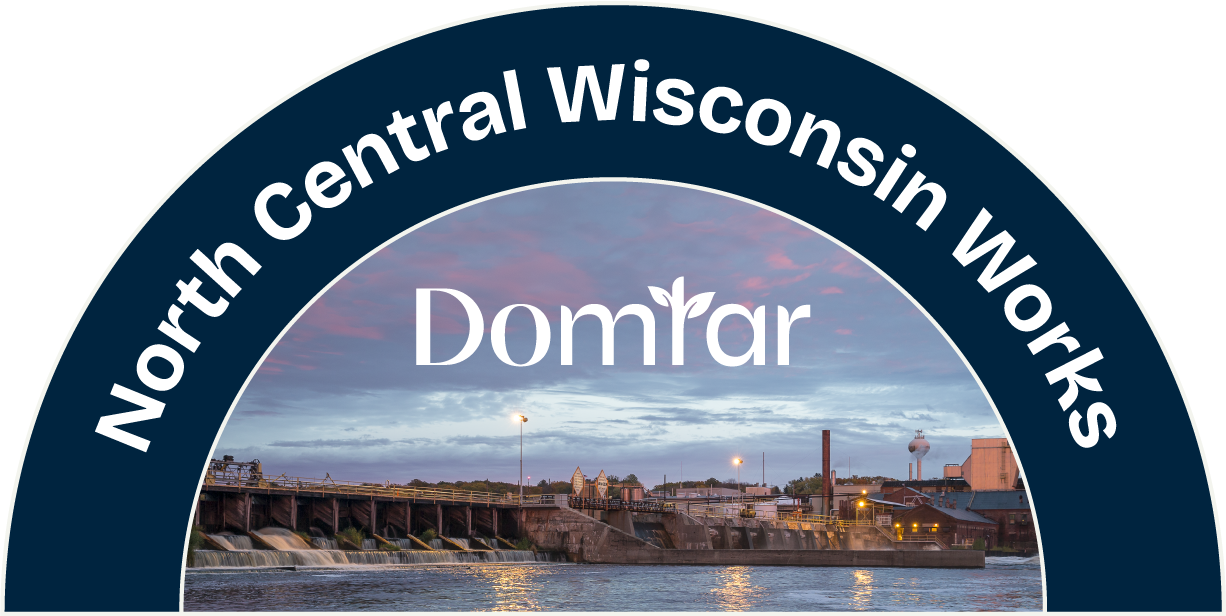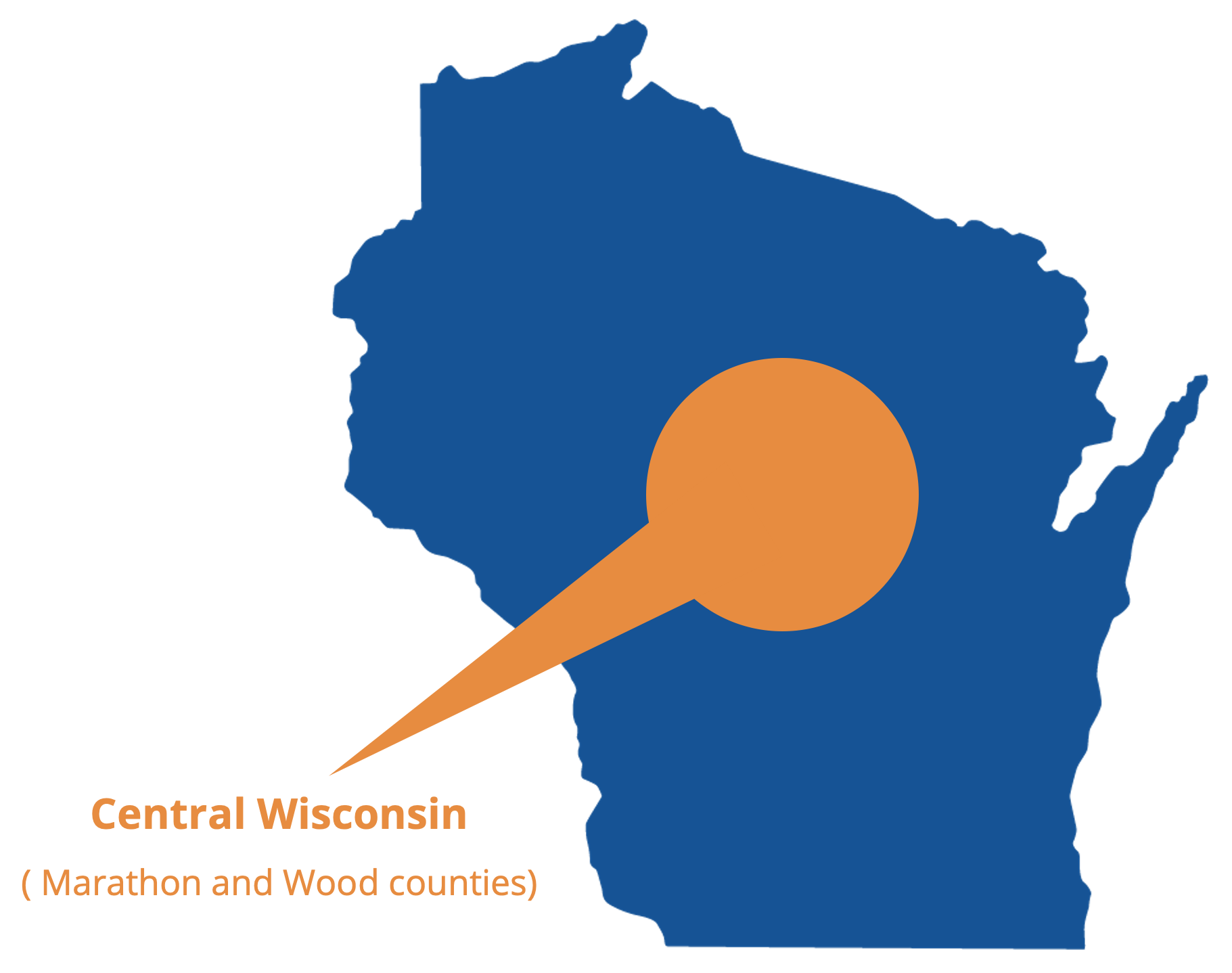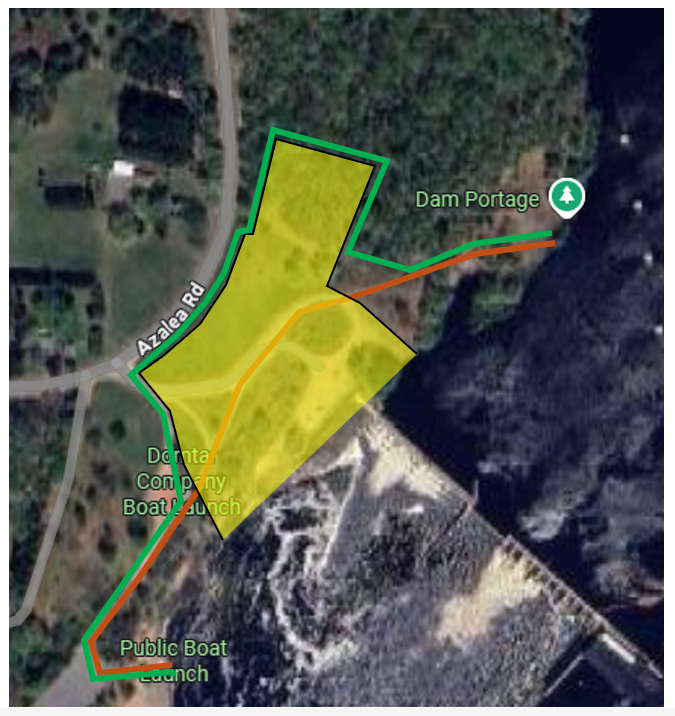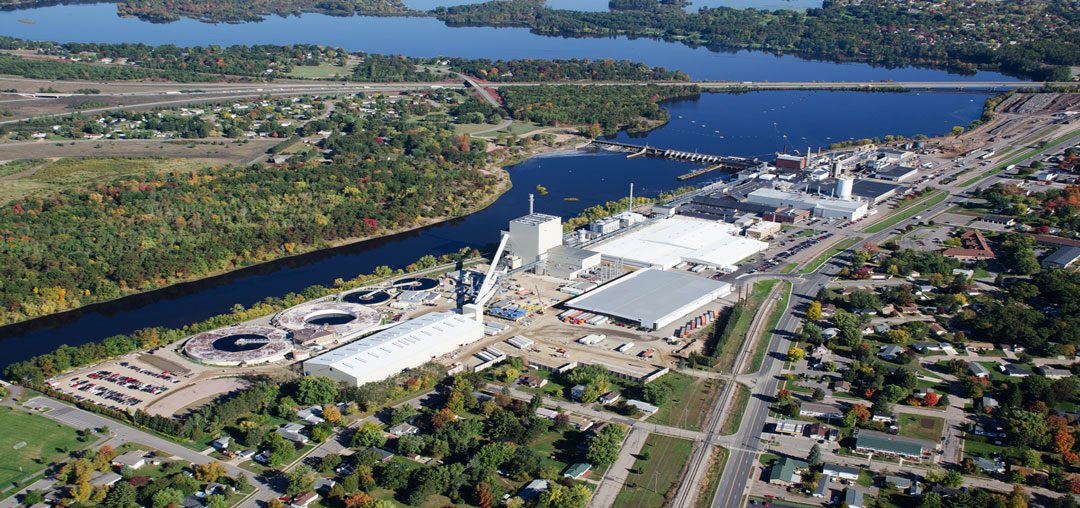
Over a Century of Economic Impact
The Rothschild Dam’s Benefits to North Central Wisconsin
Since the first roll of paper was produced at Domtar’s Rothschild Mill in November 1910, the facility has been a key player in the region’s economy. Both the Rothschild Mill — and Domtar’s Nekoosa Mill located less than an hour away — have helped the communities of north central Wisconsin thrive by:
Supporting
> 3,500 local jobs*,
including approximately 750 direct employees.
Providing
$1 billion*
annual estimated economic impact to the local economies in the state of WI.
Contributing
> $300,000
to local causes over the past three years.
*Using the National Association of Manufacturers’ (NAM) methodology
The Rothschild Dam and Lake Wausau
A dam that created Lake Wausau provided hydroelectric power to support the Rothschild Mill’s early operations. However, the dam’s operational value to the mill has steadily decreased in recent decades. While the financial benefit of the dam for Domtar’s operations is minimal, the benefit to the community surrounding Lake Wausau, a popular recreation site for both locals and visitors, continues to grow as development increases.
Community benefits provided by the dam include:
Quality of life
Tax revenue from private residences and businesses
Reservoir management
Public safety and flood control
Economic development and business growth
Recreational opportunities
Challenges Facing the Rothschild Dam
The Timber Crib Spillway section of the Rothschild Dam was last replaced in 1964. Since then, the Rothschild Mill has invested $12 million in maintenance and repair efforts to extend its life. This portion of the structure must be replaced.
Domtar’s Commitment
Although the dam and its related hydro generation are no longer part of Domtar’s core business, the company has, and will continue to, maintain the dam as part of its ongoing commitment to north central Wisconsin.
However, the company cannot fully underwrite a project estimated to cost $84 million without diverting money from investments in its regional operations in Rothschild and Nekoosa — which, at 115 and 142 years old, respectively — need significant infusions of capital to support competitiveness.


Domtar is committed to modernizing the Timber Crib Spillway section of the Rothschild Dam and is open to transferring ownership of the dam to an entity that can use this resource to serve the public and/or further generate revenue. Given its recreational, economic and public safety benefits, Domtar seeks an equitable solution to fund this project via cost-sharing funding opportunities at the local, state and federal levels.
Possible Future Investments in North Central Wisconsin
Domtar proposes to pay one-third of the entire project cost. By securing these cost-sharing partnerships, Domtar will commit to investing $100 million in north central Wisconsin via its Rothschild and Nekoosa manufacturing operations over the next three years.
This cost-sharing approach signals Domtar’s recognition of the need to modernize the dam, while it also underscores that the company cannot fully underwrite a project that distracts from its operations as a major provider of employment and economic growth in north central Wisconsin.
FAQs
What is the history of the Rothschild Dam?
- The hydroelectric dam was built in 1912 and initially used to power the Rothschild Mill and channel pulp wood from upstream to the mill for pulp and paper manufacturing.
- Lake Wausau, a popular recreation site for both locals and visitors, was created by the installation of the dam.
- The dam provides other community benefits, including private residence/tax revenue, reservoir management and, most importantly, public safety related to flood control.
- The Rothschild dam spans 663 feet across the Wisconsin River.
- More than a century of service has impacted the 276-foot-long Timber Crib Spillway section of the Rothschild Dam.
- This section of the dam was last replaced in 1964, and patchwork repairs are no longer sufficient for safety reasons per the Federal Energy Regulatory Commission (FERC).
- The remaining 387-foot concrete section of the dam does not need replacement.
What role does the Rothschild Dam play in the mill’s daily operations?
- The dam and its related hydro generation are no longer part of Domtar’s core business.
- While the financial benefit of the dam for Domtar’s operations is minimal, the benefit to the community surrounding Lake Wausau continues to grow.
Does the Rothschild Dam produce electricity for the surrounding communities?
No. Any electricity produced by the dam is consumed within the mill, which offsets the amount of electricity Domtar purchases from the utility company. Due to the dam’s limited generation capacity — providing less than 10% of the mill’s total energy needs — combined with its maintenance costs, internal power generation at the Rothschild Mill is considered cost neutral.
How many businesses and homes would be impacted if the dam wasn’t repaired?
- There is a significant socioeconomic impact, both direct and indirect.
- Properties located directly on the water would be impacted.
- Many businesses, recreational opportunities, local governmental agencies and real estate would all be indirectly impacted.
- To understand the exact number, reviews of floodplain and inundation maps are needed.
Has Domtar been planning for this eventual repair?
- Domtar has been maintaining the project accordingly and has been in constant contact with regulatory agencies.
- The company has been exploring all possible options and working with multiple engineering firms and regulatory agencies to identify potential solutions for several years.
Why is Domtar replacing the dam now?
- More than a century of service has impacted the 276-foot-long Timber Crib Spillway section of the Rothschild Dam.
- This section of the dam was last replaced in 1964, and patchwork repairs are no longer sufficient per FERC.
- Since the Timber Crib Spillway section was replaced in 1964, the Rothschild Mill has invested $12 million in maintenance and repairs to extend its life.
- The remaining 387-foot concrete section of the dam does not need replacement.
Will drawdowns of Lake Wausau be necessary?
- Pending final regulatory approvals of proposed project design, no drawdowns are anticipated or currently planned on Lake Wausau.
- Domtar will work to limit the impact on area businesses and homeowners.
Will the Domtar boat launch at the Rothschild Dam be impacted by the work on the dam?
- During construction, the original canoe portage route (brown line in below illustration) will no longer be available for pedestrian use.
- A safer route has been designated around the construction zone (green line in below illustration), with signs posted along the route to guide pedestrians.
- While there are no plans to close the boat landing for the entire duration of the project, temporary closures may be necessary at times to ensure public safety. We expect this to happen infrequently.
- Domtar is committed to minimizing impacts on the public boat launch, portage route and surrounding community throughout this work, collaborating with local municipalities as appropriate.

How long will this project take to complete?
- The project will take approximately three to four years to complete.
Will Wisconsin-based contractors be used?
- Yes, local contractors will be used to the fullest extent possible.
Project Timeline
Aug. 2025
Site Preparation
Sept. 2025
Cofferdam Installation
Feb. 2026
Dewatering and Demolition
June 2026
Grading and Vertical Piling
Sept. 2026
Concrete Placement of Foundations and Piers
All of 2027
Form and Pour Concrete
Feb. 2028
Gate Assembly and Installation
May 2028
Bridge Installation
July 2028
Dam Commissioning and In Service
Aug. 2028
Cofferdam Removal
Feb. 2029
Project Completion

